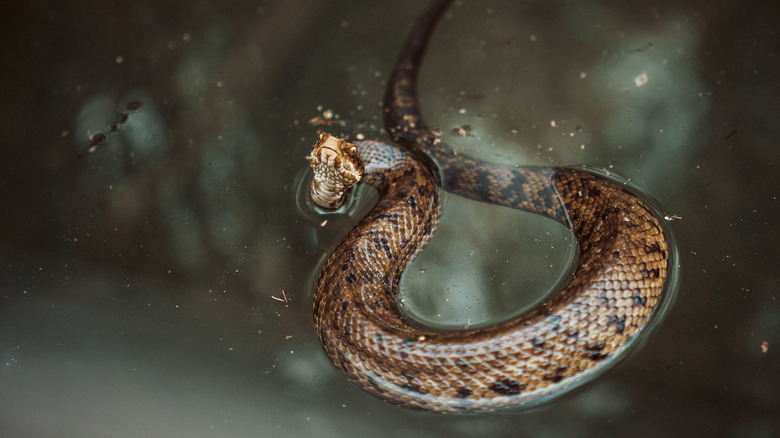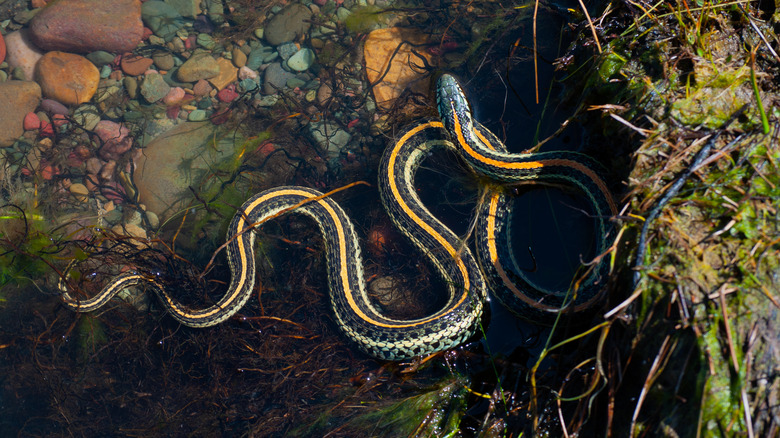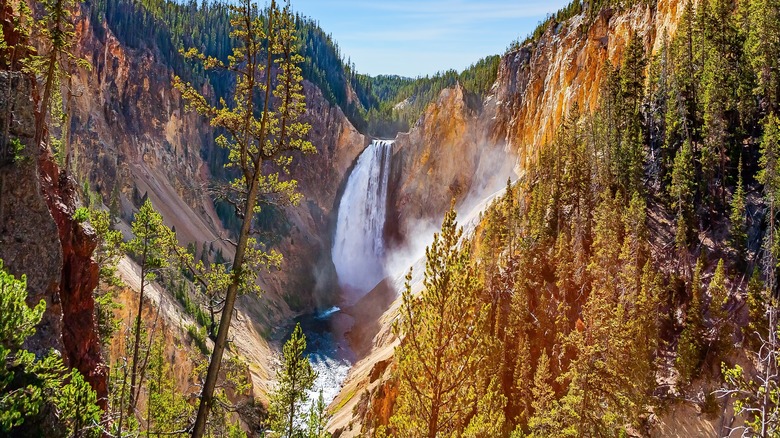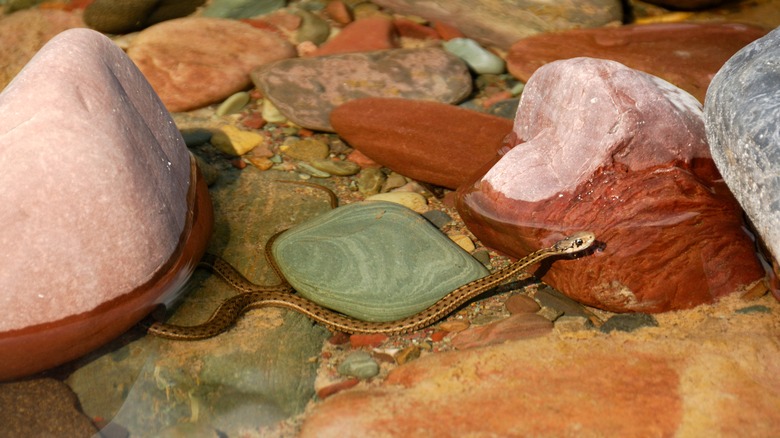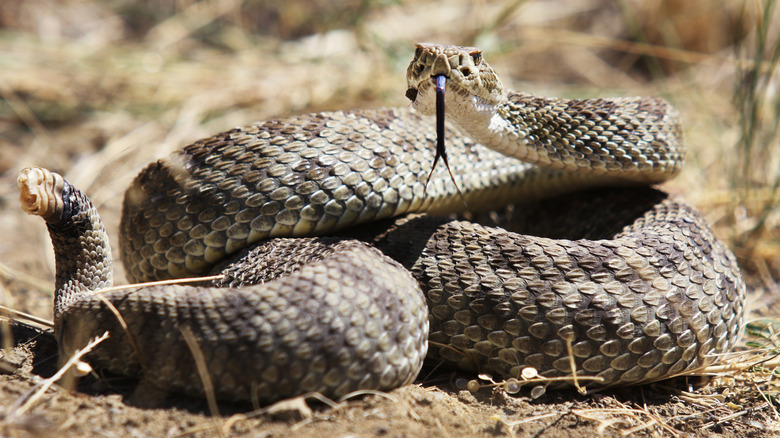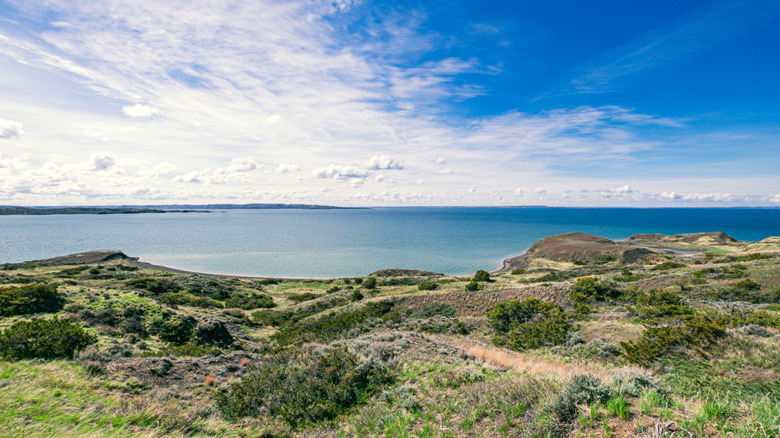These Five Scenic Montana Waters Are Also Some Of The Most Snake-Filled In The State
Snakes are, admittedly, rather creepy and disturbing creatures. In fact, fear of snakes is one of the most common worldwide phobias. However, the fact of the matter is, they're an integral part of a healthy ecosystem. Snakes are both prey and predator, contribute to pest control, and, in some cases, even help save human lives. So, despite the jump-scare, the presence of a snake on your wild wanderings is a good thing (although if it's venomous ... run).
Throughout the American West, with its plentiful, diverse open spaces, many different snake species thrive. And while a trail or field might be where you're more likely to stumble upon one, there's another unexpected place you might see them: in a river or a lake. Many snakes can swim — or at least slither — through the shallows, and certain bodies of water even tend to attract more of them. For example, Washington's most snake-filled lakes and rivers might make you think twice before diving in. Additionally, its almost-neighbor, the beautiful Montana, also has its own set of snake-heavy bodies of water.
Although there are 10 native snake species in Montana, most of them aren't venomous — except for the prairie rattlesnake. And even though the three garter snake species found in the state are said to be semi-aquatic (in other words, they can swim), the remaining species — like the rattlesnake — aren't considered aquatic at all. Nonetheless, they have still been spotted in certain Montana waters. That said, chances are that, if you do happen to see a snake in Montana's most snake-infested bodies of water, they're going to be harmless. So just go on your merry way and let the snake do its thing.
The Missouri River
The Missouri River, the longest river in North America, is renowned for its beauty and wildness. Featuring landmarks like the Gates of the Mountains — which is considered one of the West's best stretches of river — the Missouri winds through diverse landscapes across multiple states. Its sediment-filled waters — locals call it "the Big Muddy," and Mark Twain once famously proclaimed the Missouri River as "too thick to drink and too thin to plow" — tend to attract a whole lot of snakes.
The Missouri's headwaters are formed near Bozeman, Montana, from the confluence of the Madison, Gallatin, and Jefferson Rivers — also known as "Three Forks." It then meanders eastward through the state, into North Dakota and beyond, where it eventually meets the mighty Mississippi more than 2,500 miles away where it began. As it covers so much varying territory and climate, most of Montana's 10 native snake species have been spotted near (or in!) the Missouri. This includes all garter snake species, as well as prairie rattlesnakes and the North American Racer (also known as the yellow-bellied racer).
The Yellowstone River
Like the Missouri River, the Yellowstone River is also known for its incredible natural beauty. It's especially famous as its headwaters are just outside the great Yellowstone National Park, where it forms the "Grand Canyon of the Yellowstone" — a breathtaking marvel with several scenic viewpoints. With 692 miles of free-flowing water, the Yellowstone is also the longest undammed river in the United States, traveling between Wyoming, Montana, and North Dakota.
This river, traversing through some of the West's most pristine nature, also tends to invite snakes to make themselves at home. One particular species you'll find along the banks of the Yellowstone (or, you know, swimming in the river) is the bullsnake. Although it happens to resemble a rattlesnake — down to the rattle on their tail — this species is actually non-venomous. In fact, you're highly unlikely to find a rattlesnake along the Yellowstone at all. So, if you do see a snake, rest assured it's probably a bullsnake. Other likely species you might spot along the Yellowstone are garter snakes, racers, and northern rubber boas.
The Clark Fork River
The Clark Fork River famously flows through the Montana town of Missoula, one of the state's most populated and scenic cities. The Clark Fork, which starts near the former mining town of Butte — also known as the "Richest Hill On Earth" and brimming with scenic trails and mountain charm — is the largest river in the state in terms of water volume. It's also renowned worldwide for its excellent fly fishing. In addition to providing water for essential agriculture and other human needs, the Clark Fork River is also the life source for hundreds of mammals, birds, and fish. And, chances are that, if other animals like a river, that's usually a sign it's healthy — which means snakes will like it, too.
The most common types of snakes spotted along the Clark Fork are the plains garter snake, bullsnakes, the speedy racer snakes (which can cruise along at around 3.5 miles per hour), and the unique northern rubber boa. This snake gets its name from its scales, which look and feel just like rubber. A slow, docile snake, and generally a dark gray, brown, or even green color, they're rare and usually only come out at night. Nonetheless, they have been seen along the banks of the Clark Fork. Prairie rattlesnakes are even more rare and have also been reported sparingly. However, most reported sightings of rattlers along the Clark Fork are likely bullsnakes.
The Milk River & Nelson Reservoir
Although technically two bodies of water, the Nelson Reservoir is a man-made lake along a dammed section of the Milk River. Dating to 1914 before an expansion in 1921, the Milk River — a tributary of the mighty Missouri River — flows through northeast Montana and Alberta before joining the Missouri River in Fort Peck. Its intriguing name comes from sediments eroding into the river, giving it a distinctly milky hue. The Nelson Reservoir can also have a tinge of "milk" in its waters, as it's formed from the Milk River, although it tends to lean toward a more blue-green shimmer.
Even though the reservoir was initially created for irrigation purposes, it's now a draw for locals who enjoy fishing, boating, camping, and ice-fishing. However, if you do plan to hit the water in either the river or the reservoir, it's worth mentioning that these are two of the most snake-infested bodies of water in Montana. And, unfortunately, the most common snake around the 729-mile-long Milk River and the Nelson Reservoir is the venomous prairie rattlesnake. Because, although these rattlers prefer the arid plains, they have been spotted making their away across the river and swimming in the lake. In other words — watch your step!
Although the chances for coming across a rattler are high, you also may encounter non-venomous species like garter snakes, racers, bullsnakes, or the hognose snake in the areas of the Milk River and the Nelson Reservoir.
Fort Peck Lake
To round out the list of the most snake-infested bodies of water in Montana, there's the state's largest man-made reservoir: Fort Peck Lake. Fort Peck Lake spreads across six counties in Montana's eastern prairie, near the eponymous town and Indian reservation. You'll likely hear the word "prairie" and already know that prairie rattlesnakes have been spotted often in the Fort Peck area.
Along with that, nearly all of Montana's snake species — including the garter snakes, hognose snakes, racers, and milk snakes — are also common in the dense, dry grassland around Fort Peck. And although milk snakes aren't venomous, they do resemble Coral snakes found in the southern United States, which are very deadly. Thankfully, a well-known mnemonic device can help you distinguish these two: "Red on yellow, kill a fellow; red on black, venom lack." (Hint: Milk snakes are red on black!). That said, your best bet is to avoid a dangerous encounter is to stay away and give them space. Despite its high number of snake residents, Fort Peck Lake remains a beautiful, underrated corner of Montana worth visiting.
